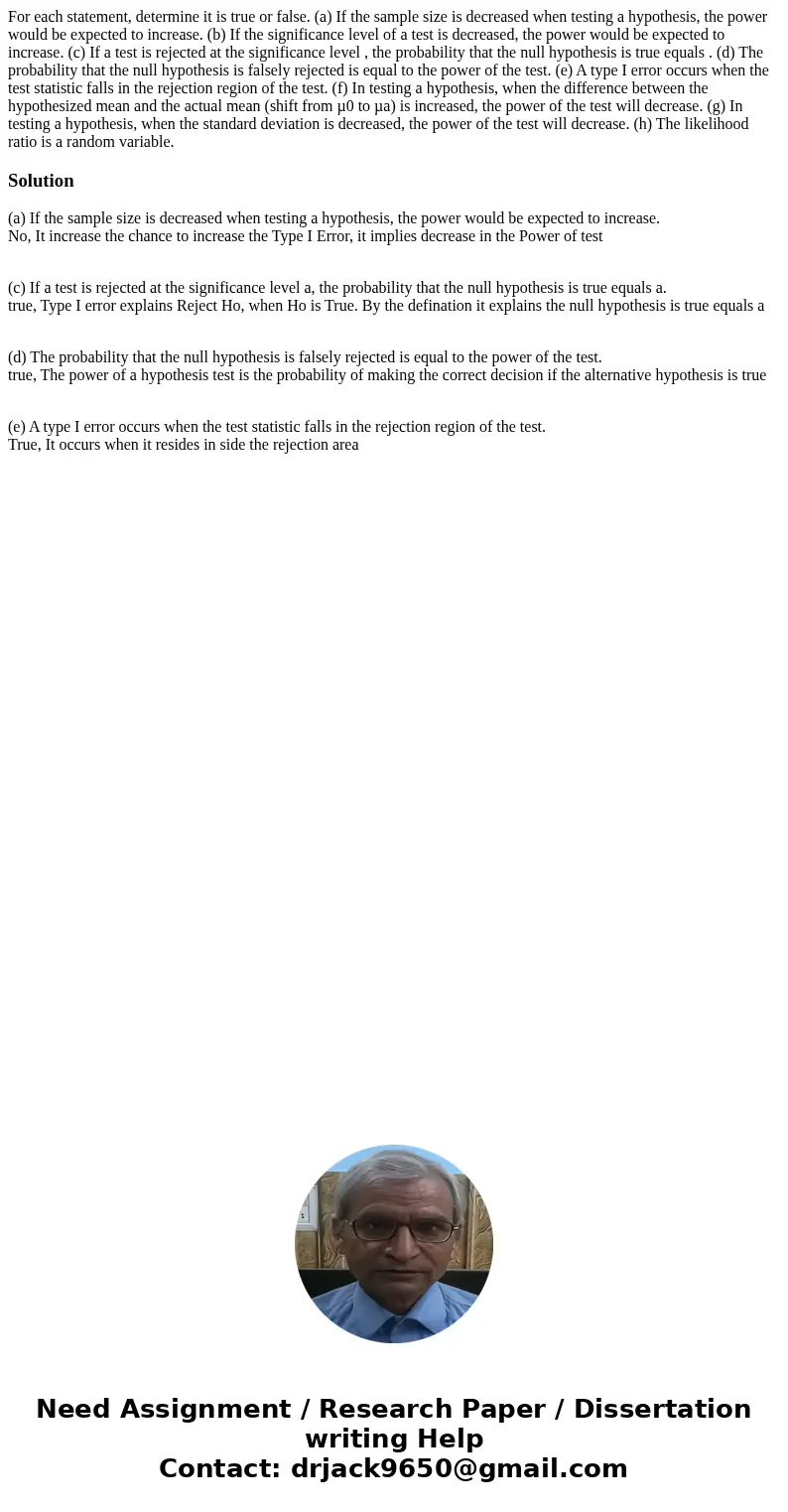For each statement determine it is true or false a If the sa
For each statement, determine it is true or false. (a) If the sample size is decreased when testing a hypothesis, the power would be expected to increase. (b) If the significance level of a test is decreased, the power would be expected to increase. (c) If a test is rejected at the significance level , the probability that the null hypothesis is true equals . (d) The probability that the null hypothesis is falsely rejected is equal to the power of the test. (e) A type I error occurs when the test statistic falls in the rejection region of the test. (f) In testing a hypothesis, when the difference between the hypothesized mean and the actual mean (shift from µ0 to µa) is increased, the power of the test will decrease. (g) In testing a hypothesis, when the standard deviation is decreased, the power of the test will decrease. (h) The likelihood ratio is a random variable.
Solution
(a) If the sample size is decreased when testing a hypothesis, the power would be expected to increase.
No, It increase the chance to increase the Type I Error, it implies decrease in the Power of test
(c) If a test is rejected at the significance level a, the probability that the null hypothesis is true equals a.
true, Type I error explains Reject Ho, when Ho is True. By the defination it explains the null hypothesis is true equals a
(d) The probability that the null hypothesis is falsely rejected is equal to the power of the test.
true, The power of a hypothesis test is the probability of making the correct decision if the alternative hypothesis is true
(e) A type I error occurs when the test statistic falls in the rejection region of the test.
True, It occurs when it resides in side the rejection area

 Homework Sourse
Homework Sourse